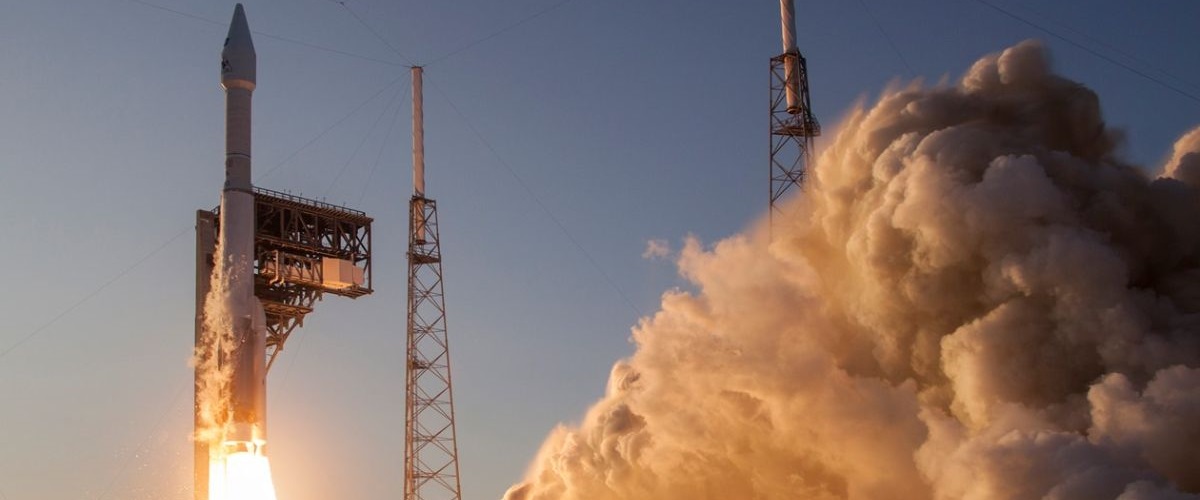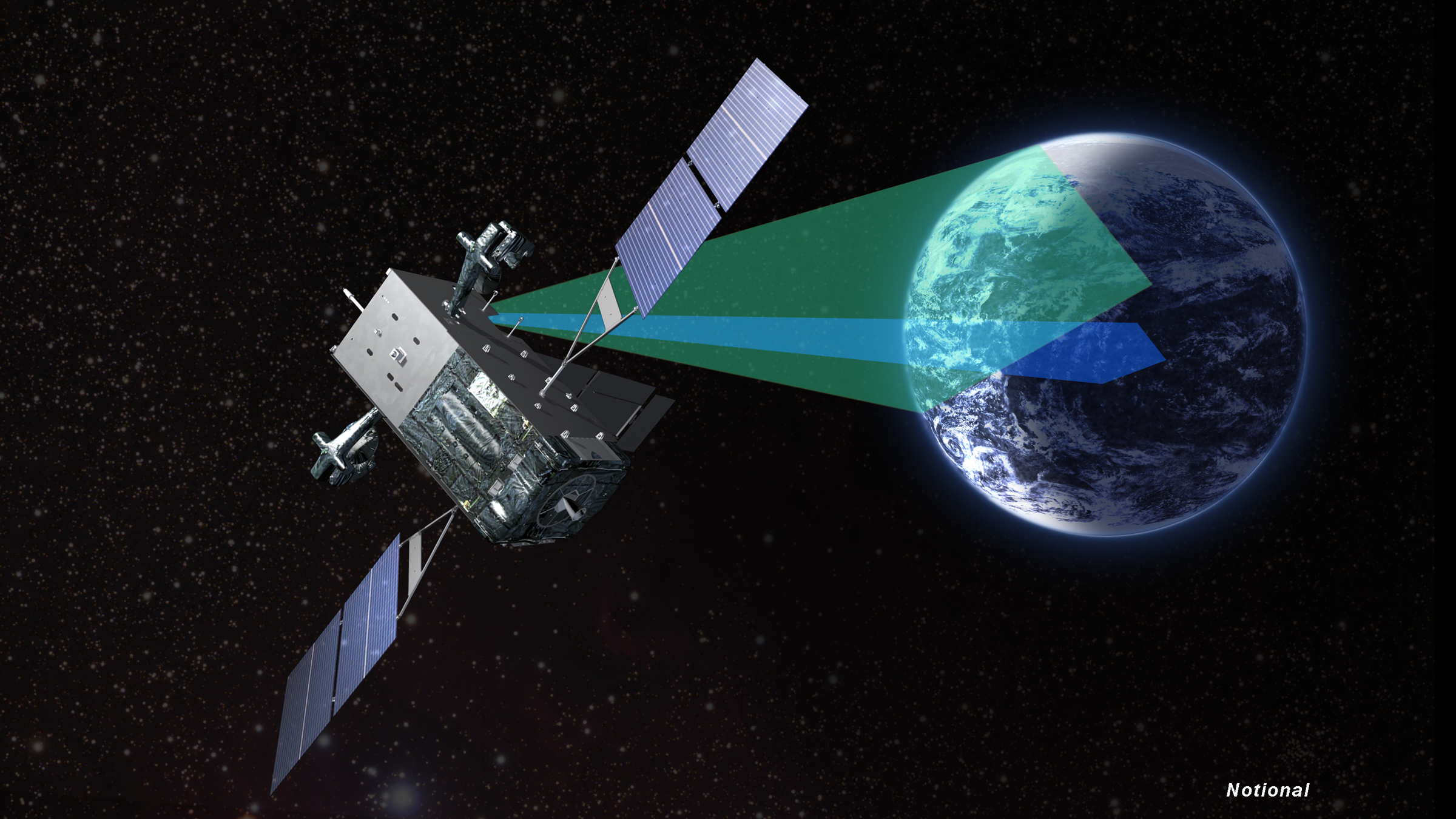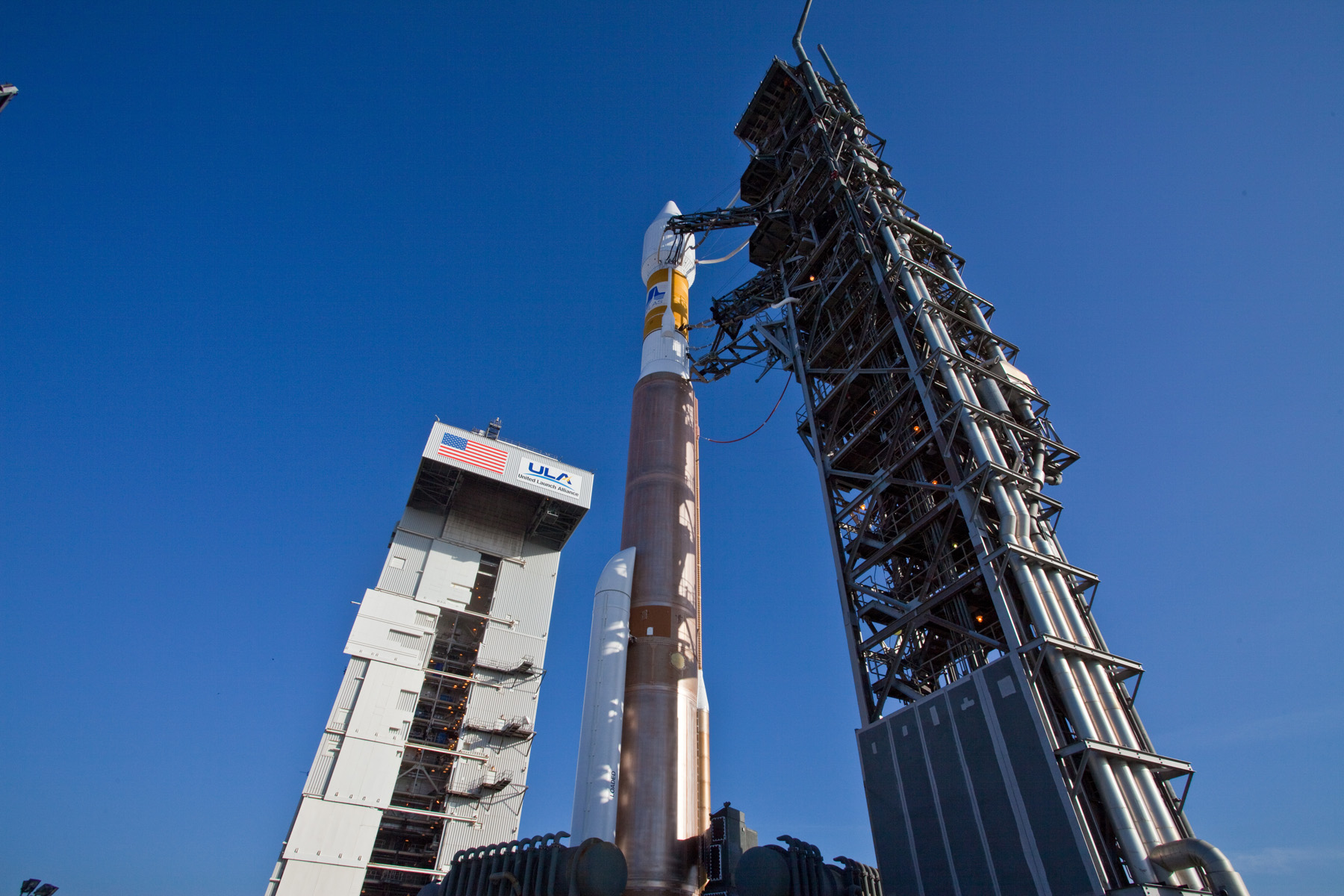
A United Launch Alliance Atlas V rocket will launch the fourth Geostationary Satellite of the Space-Based Infrared for the United States Air Force. This launch will mark the completion of the fully operational SBIRS constellation with four satellites in Geostationary Orbit and at least a pair of functional hosted payloads on satellites in Highly Elliptical Orbits to provide global missile warning and tracking capability via staring and scanning sensors installed on each satellite, capable of detecting infrared signatures of Intercontinental Ballistic Missiles as well as the much fainter signatures of short -range missiles. Atlas V AV-076 will fly in the 411 configuration with one Solid Rocket Boosters, using a more-powerful than previous SBIRS missions to provide sufficient margin for the deorbitation of the Centaur upper stage.
 |
|
Launch date:
|
January 19, 2018
Window open:
|
7:48 p.m. EST
Window close:
|
8:28 p.m. EST
Launch site:
|
Space Launch Complex 41, Cape Canaveral Air Force Station, Florida
{colsp=2}
[highlight]L[eventtimer]2018-01-20 00:48:00;%c%%ddd%/%hh%:%mm%:%ss%[/eventtimer][/highlight]

Mission Insignia
Launch coverage: (beginning at 7:28 p.m. EST)
Payload:
SBIRS-GEO (Space Based Infra Red Sensor - Geostationary) is the geostationary component of the SBIRS-High program, which will replace the DSP system of early warning satellites in providing early warning for Intercontinental Ballistic Missile launches.
The SBIRS sensors are designed to provide greater flexibility and sensitivity than DSP and can detect short-wave and expanded mid-wave infrared signals allowing the system to perform a broader set of missions. These enhanced capabilities will result in improved prediction accuracy for global strategic and tactical warfighters.


The SBIRS-GEO spacecraft is a 3-axis stabilized A2100M platform with a scanning sensor and a staring sensor. Sensor pointing is accomplished with pointing mirrors within the telescopes. The GEO scanning sensor will provide a shorter revisit time than DSP over its full field of view, while the staring sensor will be used for step-stare or dedicated stare operations over smaller areas.
Specifications
Type / Application:|
- Early Warning
Operator:|
- USAF
Contractors:|
- Lockheed Martin
Equipment:|
- 2 SBIRS sensors (scanning and staring)
Configuration:|
- A2100M
Dimensions:|
- ?
Propulsion:|
- LEROS-1C
Power:|
- 2 deployable solar arrays
- batteries
Life Time:|
- 12 years
Launch Mass:|
- ~ 4500 kg
Orbit:|
- GEO
- (SBIRS GEO Flight 4 Orbit at Separation) Perigee Altitude: 100.0 nmi
- Apogee Altitude: 19358 nmi
- Inclination: 16.88 deg
- Argument of Perigee: 178.0 deg
Launch Vehicle:
The Atlas V 411 Launch Vehicle is a part of the flight proven Atlas V 400/500 family that is being operated by United Launch Alliance. Atlas V 411 takes advantage of the modular approach taken to Solid Rocket Motors on Atlas V that allows between zero and five SRMs (three for the 400 series) to be attached to the rocket to cater the launcher specifically for the requirements of the payload to be delivered to orbit. The 411 configuration has two stages, a Common Core Booster – with a single Solid Rocket Motors attached to it – and a Centaur Upper Stage. Centaur can make multiple burns to deliver payloads to a variety of orbits including Low Earth Orbit, Geostationary Transfer Orbit and Geostationary Orbit as well as Earth Escape Trajectories.

Because of its very specific performance range, Atlas V 411 only has flown three times to date first with the commercial Astra 1KR satellite in 2006 followed by the classified NROL-28 and 34 missions for the National Reconnaissance Office in 2008 ad 2011.
Every Atlas V version has a three digit ID-Number:
First Digit: Payload Fairing diameter: 4XX – 4m Diameter; 5XX – 5.4m Diameter
Second Digit: Number of Solid Rocket Boosters (0-5)
Third Digit: Number of RL-10A Engines on Centaur (1 or 2)

Atlas V 411 stands 58.3 meters tall (depending on the fairing) and has a main diameter of 3.81 meters.
It has a launch mass of 381,000 Kilograms, using one Solid Rocket Motors installed on the first stage to provide additional thrust during the initial flight phase.
The Launcher uses the conventional Atlas V design with a Common Core Booster and a Centaur Upper Stage on top of it.
Atlas V 411 features the 4-meter payload Fairing under which it can carry a theoretical payload mass of 12,150kg to Low Earth Orbit, though maximum LEO payload for the 400 series is capped at 9,050kg due to structural limits.
Geostationary Transfer Orbit Capability is 6,100 Kilograms.
{colsp=2}
Height:|
Diameter:|
Launch Mass:|
Stage 1:|
Boosters:|
Span:|
Stage 2:|
Mass to LEO:|
Mass to SSO:|
Mass to GTO:|

Because of its very specific performance range, Atlas V 411 only has flown three times to date first with the commercial Astra 1KR satellite in 2006 followed by the classified NROL-28 and 34 missions for the National Reconnaissance Office in 2008 ad 2011.
Every Atlas V version has a three digit ID-Number:
First Digit: Payload Fairing diameter: 4XX – 4m Diameter; 5XX – 5.4m Diameter
Second Digit: Number of Solid Rocket Boosters (0-5)
Third Digit: Number of RL-10A Engines on Centaur (1 or 2)

Atlas V 411 stands 58.3 meters tall (depending on the fairing) and has a main diameter of 3.81 meters.
It has a launch mass of 381,000 Kilograms, using one Solid Rocket Motors installed on the first stage to provide additional thrust during the initial flight phase.
The Launcher uses the conventional Atlas V design with a Common Core Booster and a Centaur Upper Stage on top of it.
Atlas V 411 features the 4-meter payload Fairing under which it can carry a theoretical payload mass of 12,150kg to Low Earth Orbit, though maximum LEO payload for the 400 series is capped at 9,050kg due to structural limits.
Geostationary Transfer Orbit Capability is 6,100 Kilograms.
Specifications
Height:|
- 58.3m
Diameter:|
- 3.81m
Launch Mass:|
- 381,300kg
Stage 1:|
- Atlas Common Core Booster
Boosters:|
- One
Span:|
- 6.9m
Stage 2:|
- Centaur
Mass to LEO:|
- 12,150kg (200km, 28.5°) — Theoretical
Mass to SSO:|
- 8,500kg
Mass to GTO:|
- 6,100kg (1.5km/s)
Flight Sequence/Launch Profile:
L-2 Weather forecast for LC-41, CCAFS, Florida 19th January 2018 (Launch Window)
Time
|
Temps
|
Pressure
|
Relative Humidity
|
Visibility
|
Solar Activity
|
Wind
|
Weather
Launch Window (7:52 p.m. - 8:32 p.m. EST)
|
Launch Window (7:52 p.m. - 8:32 p.m. EST)
51-52°F
|
30.30INS
|
80%
|
7 miles
|
Low
|
360° @ 12-16 KT (230')
|
Isolated Coastal Showers
Launch day overall probability of violating weather constraints: 20%
Primary concern(s): Cumulus Clouds
24-hour delay overall probability of violating weather constraints 20%
Primary concern(s): Cumulus Clouds
Next forecast will be issued: 17 January 2018, 0800 EST
Update: New forecast shows a 90 percent chance of favorable weather conditions for launch (2nd attempt, 19th January 7:48 a.m. ET).
Go Atlas! Go Centaur! Go SBIRS GEO Flight 4!
Links:
Last edited:
